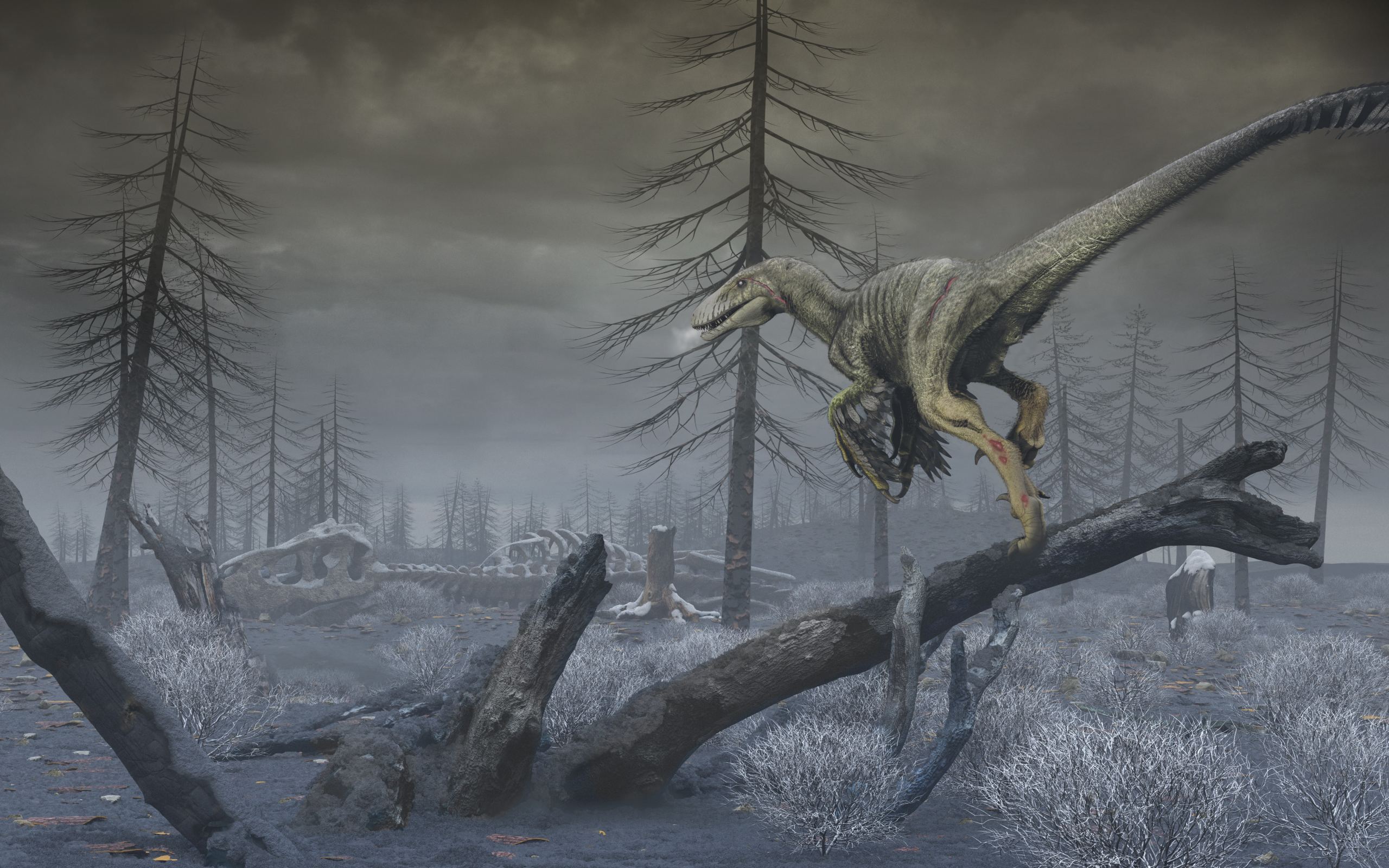When a giant meteor crashed into Earth 66 million years ago, the impact pulverized cubic kilometers of rock and blasted the dust and debris into the Earth’s atmosphere. It was previously believed that sulfur from the impact and soot from the global fires that followed drove a global “impact winter” that killed off 75% of species on Earth, including the dinosaurs.
A new geology paper says that the die-off was additionally fueled by ultrafine dust created by the impact which filled the atmosphere and blocked sunlight for as long as 15 years. Plants were unable to photosynthesize and global temperatures were lowered by 15 degrees C (59 F).
Most scientists agree the disaster started with an asteroid impact, where an asteroid at least 10 kilometers wide struck the Chicxulub region in the present-day Yucatán Peninsula in Mexico. The impact released 2 million times more energy than the most powerful nuclear bomb ever detonated.
The devastation created layer of ash sandwiched between layers of rock, known as the Cretaceous-Paleogene (K–Pg) boundary, formerly known as the Cretaceous–Tertiary (K-T) boundary, which is found across the world in the geologic record. It includes a layer of iridium, an element common in asteroids but rare on Earth. It was this ‘iridium anomaly’ that first revealed the extinction event as an asteroid strike to geologists more than three decades ago.
What has been debated is what created conditions for the post-impact winter. The leading candidates were sulphur from the asteroid’s impact, or soot from global wildfires that ensued after the impact. Both would have blocked out sunlight and plunged the world into a long, dark winter, collapsing the food chain and creating a chain reaction of extinctions.

But in this new research, scientists from the Royal Observatory of Belgium (ROB) studied new sediment samples taken from the Tanis fossil site in North Dakota in the US, which captures a 20-year period during the aftermath of the asteroid impact. Analysis of the samples revealed evidence of silicate dust particles, particles that were ejected into the atmosphere and eventually settled back down on the planet.
“We specifically sampled the uppermost millimeter-thin interval of the Cretaceous-Paleogene boundary layer,” said Pim Kaskes from the Archaeology, Environmental Changes & Geo-chemistry (AMGC) at the Vrije Universiteit Brussel (VUB) and the Vrije Universiteit Amsterdam (VUA), who was also involved in the study. “This interval revealed a very fine and uniform grain-size distribution, which we interpret to represent the final atmospheric fall-out of ultrafine dust related to the Chicxulub impact event. The new results show much finer grain-size values than previously used in climate models and this aspect had important consequences for our climate reconstructions.”
Based on their findings, the scientists also created a new paleoclimate computer model that evaluated the roles of sulfur, soot, and silicate dust on the post-impact climate.

“The new paleoclimate simulations show that such a plume of micrometric silicate dust could have remained in the atmosphere for up to 15 years after the event, contributing to global cooling of the Earth’s surface by as much as 15 °C in the initial aftermath of the impact,” said Cem Berk Senel from ROB, the lead author of the study.
But while the dust was a contributor to the catastrophic conditions, the sulfur and soot were also a factor.
“We suggest that, together with additional cooling contributions from soot and sulfur, this is consistent with the catastrophic collapse of primary productivity in the aftermath of the Chicxulub impact,” the researchers wrote in their paper.
The prolonged disruption in photosynthesis would pose severe challenges for both terrestrial and marine habitats and mass extinctions would occur in groups not adapted to survive the dark, cold, and food-deprived conditions for at least two years. The researchers said this matches the paleontological records, which show that any plants or animals that could enter a dormant phase (for example, through seeds, cysts, or hibernation in burrows) and were able to adapt to an omnivorous diet, or weren’t dependent on one particular food source generally better survived the K-Pg event.

